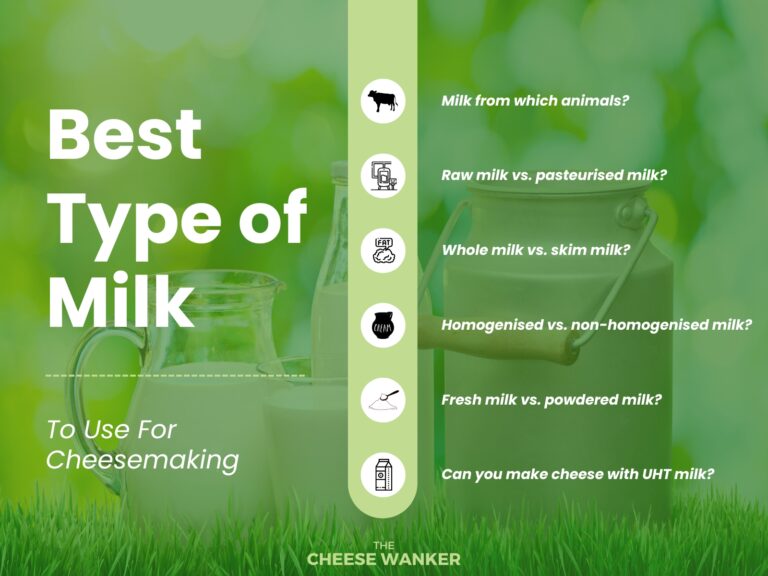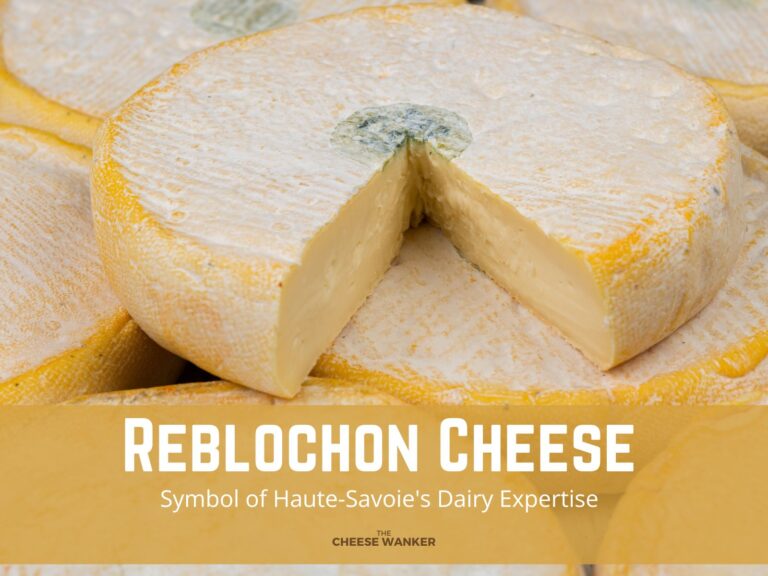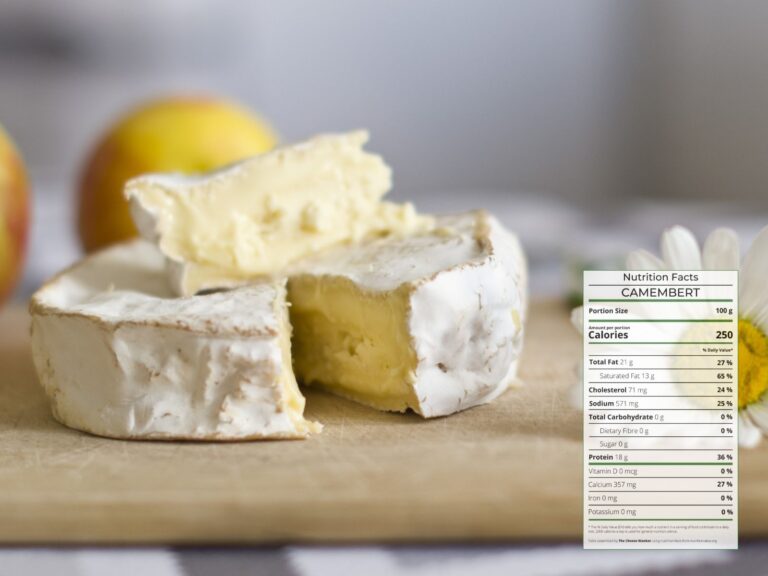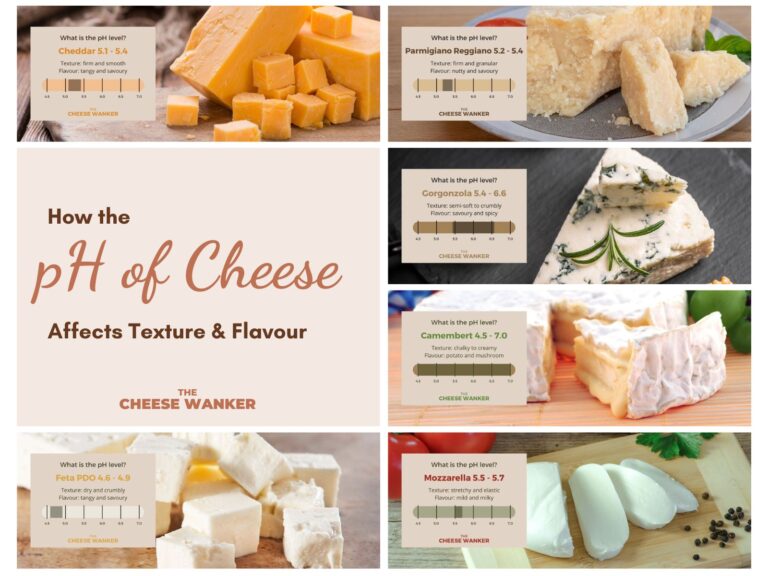Camembert is a soft cheese that originates from Normandy, in the North of France. Its origins date back to the late 1700’s and cheesemakers still make it today using the same recipe. Read on to learn how Camembert de Normandie is made.
SEE ALSO: What’s the real difference between Brie and Camembert? →
What is Camembert de Normandie?
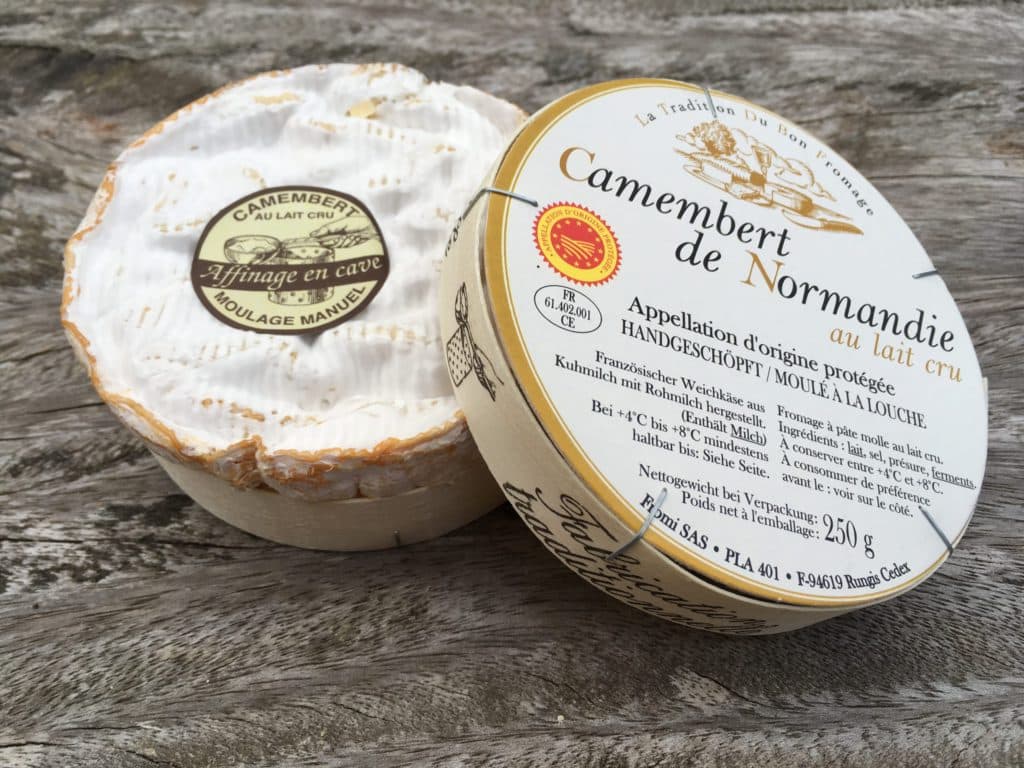
Without a doubt, Camembert is one of the most famous soft white mould cheeses from anywhere in the world. In 1791, Marie Hamel adapted a recipe for Brie to invent Camembert. Since then, cheesemakers have copied her cheese around France and the rest of the world.
Because the AOP does not protect the name, producers can call their cheese Camembert even if they’re not following the recipe closely.
On the other hand, Camembert de Normandie is protected by an AOP stamp. Therefore, its name is reserved exclusively for cheeses made according to strict specifications in the Normandy region.
Moreover, this type of Camembert exclusively uses raw cow’s milk, must have a white bloomy rind and meet very strict dimension requirements.
The area of production
When the AOP uses the term “area of production”, they mean where the milk comes from, where the cheese is made and where it matures.
According to AOP specifications, the area of production for Camembert de Normandie includes the departments of Calvados, Eure, Manche and Orne. And within each department, there is an extensive list of communes with the most famous one being Camembert!
However, the year 2020 saw an unsuccessful attempt to extend the region of production to include the department of Mayenne. So, as things stand, the four departments listed above still have exclusive rights to this AOP-protected Camembert.
What milk is used to make Camembert de Normandie?
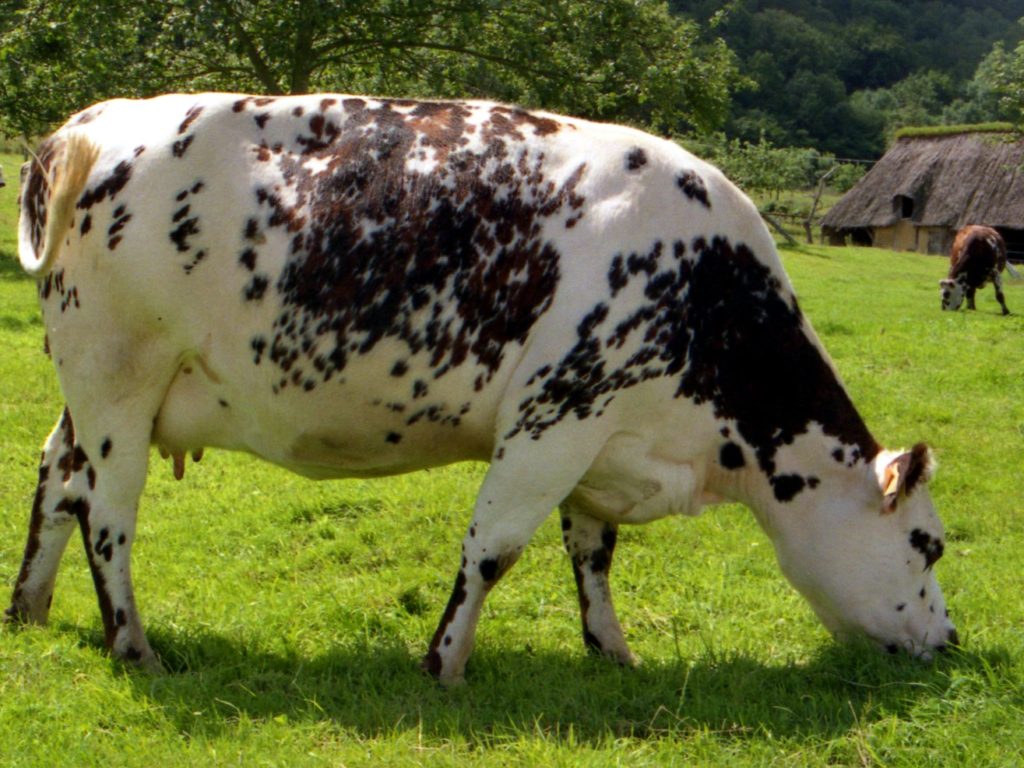
Over the years, there have been many attempts to allow pasteurised milk to be used. But, time and time again, the traditional methods using raw cow’s milk have been preserved.
One such recent attempt proposed two separate categories under the AOP listing: Camembert de Normandie (pasteurised) and Véritable Camembert de Normandie (raw).
Breed
As of May 2017, all milk used to make Camembert de Normandie has to come from local herds that are at least 50% Normande cows. Normande cows originated in Normandy and date back to the 9th century.
As a matter of fact, their milk is used to make a number of other famous local cheeses such as Livarot and Pont l’Evêque.
Pasture
Furthermore, the cows must be pasture fed for a minimum of six months each year. For the rest of the year, farmers can feed their cows hay that is freshly supplied each day. They can also be fed a mixture of corn, beets, cereals and molasses.
The traditional methods
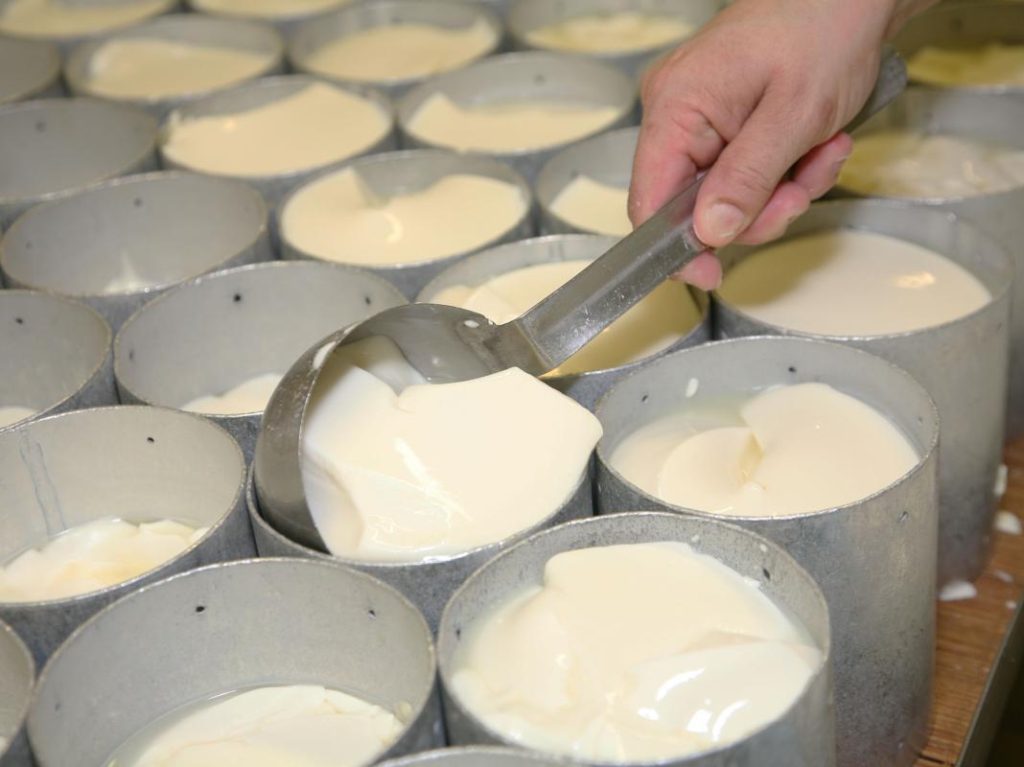
As you can expect, there are very strict guidelines in place for the production of Camembert de Normandie. Let’s have a look at what that entire process looks like.
Handling of the milk
The milk has to be used within 72 hours of milking. This ensures the high quality of the raw milk and its safety. In addition to this, the raw milk cannot be heated to a temperature above 40°C (104°F).
The cheesemaker is also not allowed treat their milk by ultrafiltration, microfiltration or bactofugation.
Which ingredients can be added
The cheesemaker can only add the following ingredients to their milk: starter culture, rennet, yeast, mould, salt and calcium chloride. Each ingredient plays an important role in crafting the organoleptic properties of this special Camembert.
Coagulation with rennet
In a basin, the cheesemaker adds rennet to milk that is kept at a maximum of 37°C. Once the curd forms, they gently slice it vertically before being transferring to metal moulds.
Transferring the curd
After the cheesemaker cuts the curd, they transfer it to a mould using a special ladle called cuilleron. Effectively, each cheese will consist of a minimum of five ladles of curd, with each transfer separated by at least 40 minutes.
As a result of this slow process, the curds drain naturally under their own weight for the next 18 hours.
Pressing the cheese
Once the cheese forms, the maker use a metal plate to squeeze out some extra whey. Afterwards, they dry salt each individual cheese before passing it on to an affineur for maturation.
How the cheese is matured
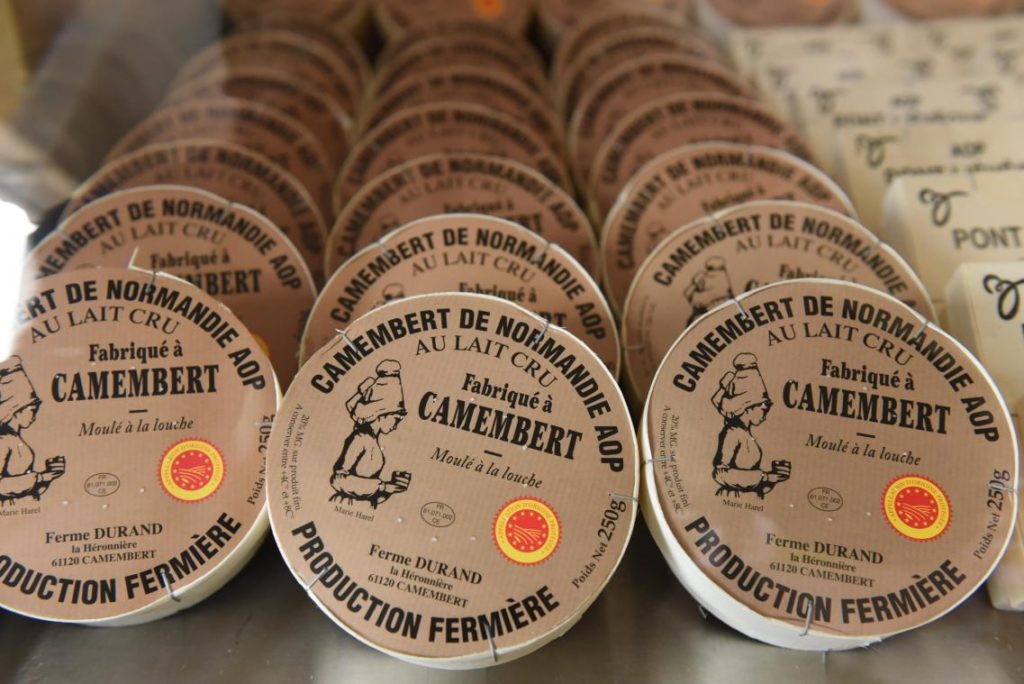
Overall, the young Camembert will spend a minimum of 13 days on wooden boards at a temperature between 10°C and 18°C. Then, the affineur packs each cheese in special wooden boxes and matures them for an additional nine days.
Finally, Camembert de Normandie can leave the fromagerie 22 days after coagulation with rennet.
The art of making Camembert de Normandie
Thank you for reading our post on how Camembert de Normandie is made. As you can see, there are very strict regulations that protect this traditional French cheese.
Would you like to learn more about how traditional cheese are made? Drop me a comment with your requests below.
